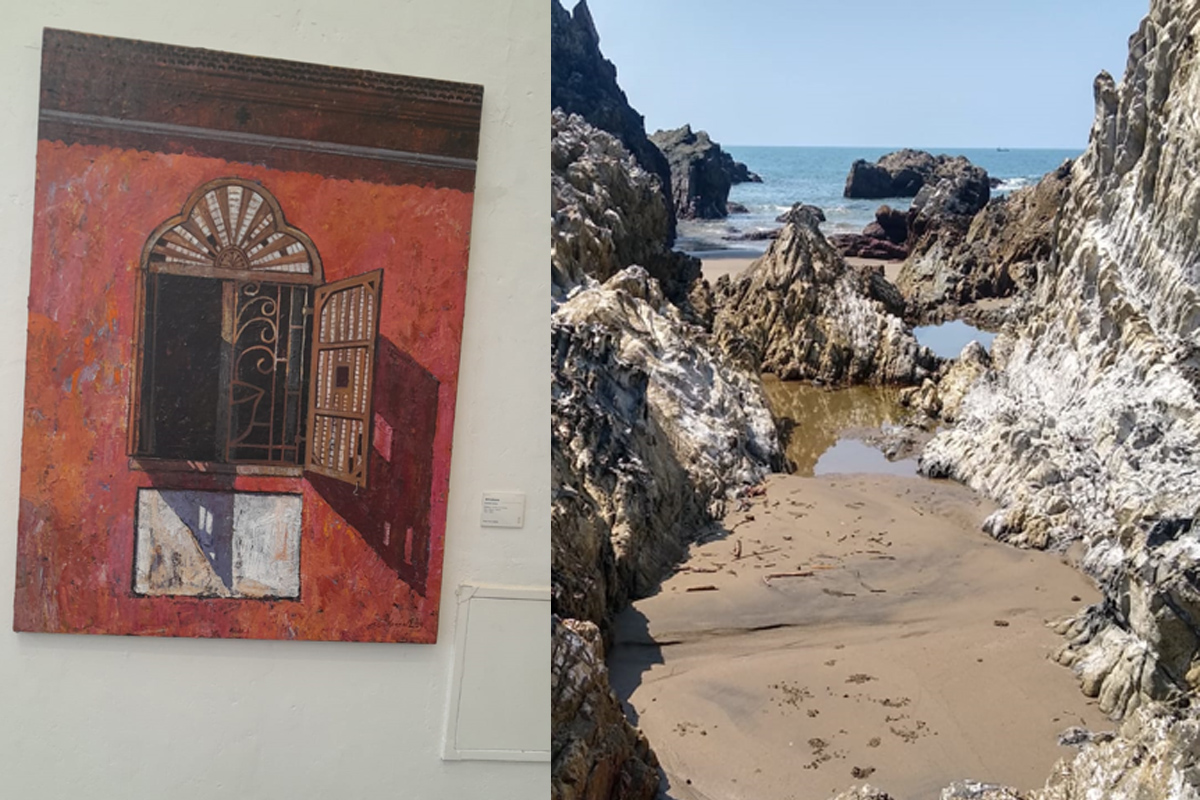Goa declares ‘Chhaava’ tax-free to celebrate the legacy of Sambhaji Maharaj
'Chhaava', starring Vicky Kaushal, is now tax-free in Goa and Madhya Pradesh. The film honors Maratha warrior Sambhaji Maharaj’s legacy.
Goa is changing. The infrastuctural changes are noteworthy by way of the new roads, bridges and better connectivity.

Goa is a dream destination for people who love the sea, sand and their fish curry with rice. No wonder, then, that it is emerging as one of the sought-after destinations for people in Bengal.
From hopping flights to weekly ones only, today there is a daily flight from Kolkata to Goa. The new international airport in Mopa (north Goa), operational since January this year and named after Manohar Parrikar, is as swanky as it can get. It makes direct flights into Goa from anywhere in the world a possibility now. Dabolim Airport is located in the south of the state. Other options include travelling by train to Mumbai and then take a car or bus.
Advertisement
There is, however, more to Goa than the sea. the beaches and the churches. It gives a wide range of options for the entire family wanting to let down its hair.
Advertisement
Goa is changing. The infrastuctural changes are noteworthy by way of the new roads, bridges and better connectivity. One keeps discovering new facets, but when you scratch the surface, the fish and feni are still the same. If you thought Goa was still associated with hippie culture, you may not be wide off the truth. Goa is still unique for the kind of people it attracts—not just tourists but settlers too. This adds a blend of the local with the global, a unique flavour of freedom from routine and the conventional.
Beautiful old-style haciendas are fast being replaced by new villas built by rich expatriates, but the lovely sea beaches and the shacks in which to sit and enjoy the beautiful sunsets over beer. and the churches are still untouched.
There have been different kinds of settlers in Goa over time. Some ‘flower people’ of the sixties stayed back to open bakeries and make cheese. They were joined by several expatriates who were retirees from the UK, and considered it cheaper and warmer to settle here in Goa.
The Israelis came to unwind from their rigorous military training, just as they went to Himachal Pradesh too, enriching the local cuisine. And then there was the Russian phase, with definitive enclosures for them. There are regions (Arambol for one) where the menu cards and names of shops are still in Russian!
For now, it is a new-age Goa. With a little bit of everything old peeping out from more of the ‘new chic’. Writers, artists, and filmmakers were the first lot who had come from Mumbai to settle down here. Then came the designers and the restaurateurs from all over the country. When work from home started, many chose to work out of Goa in Sylvan surroundings. Now retired people from Delhi and Calcutta are eyeing second homes for probable relocation.
What has changed is the way tourism is packaged into newer things to do. Heritage walks, informative walks through spice plantations, curated meals in old houses, and art and music shows are some of the things tourists can experience. Plan your stay with a day earmarked for your different activities.
Latin Quarters
If you are going to the Panjim side, throw in a walk through the Latin Quarters – Fontainhas – known for quaint Portuguese houses, some of which are well over hundreds of years.
The churches are spread out, but the Basilica of Bom Jesus, with the embalmed remains of Father Francis Xavier, is a must. This is in old Goa. The Se Cathedral is another. Itwas built in the 16th century to commemorate the victory over a Muslim army under the Portuguese leader Afonso de Alburquerque. If you take the ferry across the River Mandovi to Divar Island, there is a beautiful church known as the Church of Our Lady of Compassion, Piedade. The temples, on the other hand, have definitive Buddhist influences.
Walk through the Spice Garden
We all love Goan food—the primarily meat- and seafood-based cuisine—but have we ever wondered what makes it so special? Apart from the coconut, vinegar and Portuguese influences, the local spices grown so profusely in the state make their way into wonderful dishes.
A walk through a spice plantation provided us with an informative session through the green foliage. We were educated on the cinnamon, clove, allspice, pepper, nutmeg and mace trees. Not left out were coffee, cocoa and cashews. Did you know that, after saffron, vanilla is the most expensive food ingredient? What we get in our ice cream and cakes is artificial flavouring. We found sticks of vanilla growing naturally, all to be exported to developed nations.
But you need not only taste vindaloo in Goa. The fusion restaurants offer a mind-boggling variety, but post Covid, food is no longer cheap. Liquor is easy to access and the variety is mind-boggling.
Goan Art
Mario Miranda is a famous son of Goa. The Museum of Goa (MOG), set up as a private museum by artist Subodh Kerkar is another famous son of the soil. MOG houses some beautiful installations, sculptures and works of art. This 3-storeyed structure provides a view of his eclectic work in fabric, ceramic and multimedia.
So take your pick of art, culture, history, food or scenic beauty. For shopping the Saturday Night Market in select locations provide fun and food in additions to casual wear, jewellery etc. So go with the easy, natural flow of wherever you wish to do or go (a)!
Susegad comes from the Portuguese word ‘sossagado’, literally meaning ‘quiet’. When irritated, Goans will often say in Konkani, ‘Maka suseg di’ meaning ‘give me some peace’, which is equated with satisfaction. The season to make peace with yourself is between September and May in Goa!
Advertisement